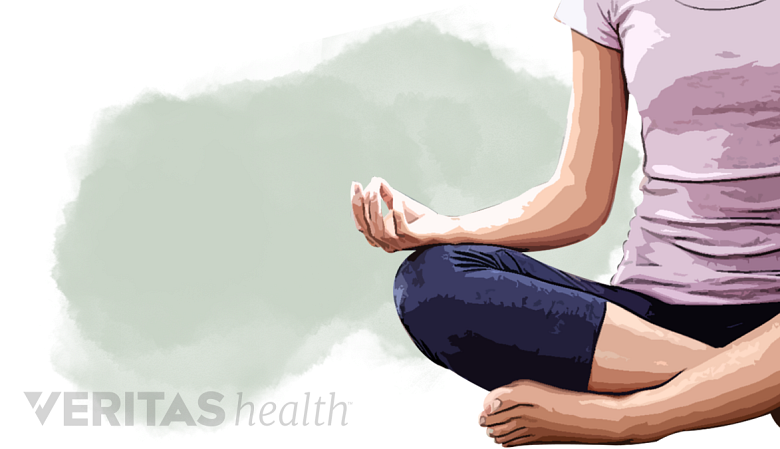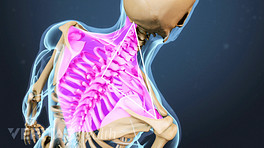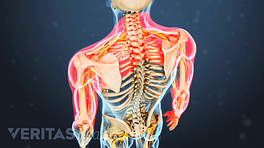The mind can be a powerful force in altering the perception of pain. Techniques that harness this power are known as mind-body medicine, and have been helpful in relaxing tight muscles and reducing anxiety in fibromyalgia.
Mind-body techniques, such as meditation, can help with treating fibromyalgia symptoms.
In This Article:
- Getting the Sleep You Need With Fibromyalgia
- Doctors Who Treat Fibromyalgia
- How Mind-Body Techniques Help With Fibromyalgia
- Exercise Helps Relieve Fibromyalgia Symptoms
Anxiety, Muscle Problems Common in Fibromyalgia
Muscle tightness and muscle spasms, as well as anxiety and depression, are common symptoms of fibromyalgia. These symptoms also play a role in conditions that often occur in combination with fibromyalgia, such as temporomandibular joint (TMJ) disorders and irritable bowel syndrome. One research study of fibromyalgia found that 71% of participants had anxiety and 56% had symptoms of depression. 1 Arnold LM, Crofford LJ, Martin SA, Young JP, Sharma U. The effect of anxiety and depression on improvements in pain in a randomized, controlled trial of pregabalin for treatment of fibromyalgia. Pain Med. 2007;8(8):633-8.
See Characteristic Symptoms of Fibromyalgia
With no single medication effectively treating all the varied symptoms of fibromyalgia, many people with the condition seek approaches other than medication to improve daily life.
Meditation, Cognitive Behavior Therapy, and Other Options
Mind-body approaches often considered for relieving fibromyalgia symptoms include:
- Biofeedback
- Cognitive behavioral therapy
- Deep breathing exercises (relaxation exercises)
- Guided imagery
- Meditation
See Multi-Specialty Fibromyalgia Treatment
Research on the effectiveness of some of these therapies is not extensive, but many people have reported success in reducing symptoms. The lack of side effects means that there is little downside to seeing if one or more of these therapies work for an individual.
Taking Control With Biofeedback
Biofeedback is a painless technique for learning how to control certain unconscious physiological processes. A biofeedback session is conducted with a therapist, and sensors are attached to record body functions, such as temperature and muscle contractions.
Electromyography (EMG) biofeedback, which measures muscle spasms and muscle contractions, is the type most often used for people with fibromyalgia. The individual’s muscle activity is shown on a monitor, and the person learns how to practice self-management to reduce symptoms while tracking progress on the monitor. EMG biofeedback is designed to alleviate muscle pain and stiffness.
Research on the impact of biofeedback has some limitations, but has shown a significant reduction of pain intensity when electromyogram feedback 2 Lauche R, Cramer H, Häuser W, Dobos G, Langhorst J. A Systematic Overview of Reviews for Complementary and Alternative Therapies in the Treatment of the Fibromyalgia Syndrome. Evid Based Complement Alternat Med. 2015;2015:610615. , 3 Glombiewski JA, Bernardy K, Häuser W. Efficacy of EMG- and EEG-Biofeedback in Fibromyalgia Syndrome: A Meta-Analysis and a Systematic Review of Randomized Controlled Trials. Evid Based Complement Alternat Med. 2013;2013:962741. is used.
Meditation Affects Perception of Pain
Approaches known as mindfulness or meditation do not take away the pain; they alter responses and the perception of pain. Mindfulness and meditation are terms that encompass many practices, which can be done individually or as part of a class. Here are three common types:
- Cognitive behavioral therapy. Taking control and changing self-defeating behaviors is a goal of this therapy. Diaries may be kept to track stressors, and a therapist helps the person learn how to delegate and prioritize. Sessions are usually conducted face-to-face, but cognitive behavioral therapy is also available online in some cases.
- Deep breathing exercises. One of the simplest forms of mindfulness and meditation is deep-breathing exercises to boost relaxation. These exercises offer another benefit for fibromyalgia. People with fibromyalgia are more likely than the general population to take quick, small breaths, and these short breaths have been linked to increased pain. 4 Zautra AJ, Fasman R, Davis MC, Craig AD. The effects of slow breathing on affective responses to pain stimuli: an experimental study. Pain. 2010;149(1):12-8.
- Guided imagery. By focusing on a soothing image or imagining a pleasant scenario, a person is able to relax and reduce anxiety or depression. Guided imagery can be tailored to specific challenges the person is facing.
See Tai Chi and Yoga for Arthritis
Mind-body medicine has gained more public acceptance in recent years, and there is a range of care options. The doctor is often a good resource on what is available in the patient’s community. Checking with the insurance company to see if the therapy is covered and whether there is a limit on the number of covered sessions is advised.
A number of smartphone apps may be helpful as well. There are apps focusing on guided cognitive behavior therapy, breathing exercises, and guided imagery, among other techniques. Some apps are designed for individuals to use on their own, while others are meant to supplement treatment with a health care professional.
- 1 Arnold LM, Crofford LJ, Martin SA, Young JP, Sharma U. The effect of anxiety and depression on improvements in pain in a randomized, controlled trial of pregabalin for treatment of fibromyalgia. Pain Med. 2007;8(8):633-8.
- 2 Lauche R, Cramer H, Häuser W, Dobos G, Langhorst J. A Systematic Overview of Reviews for Complementary and Alternative Therapies in the Treatment of the Fibromyalgia Syndrome. Evid Based Complement Alternat Med. 2015;2015:610615.
- 3 Glombiewski JA, Bernardy K, Häuser W. Efficacy of EMG- and EEG-Biofeedback in Fibromyalgia Syndrome: A Meta-Analysis and a Systematic Review of Randomized Controlled Trials. Evid Based Complement Alternat Med. 2013;2013:962741.
- 4 Zautra AJ, Fasman R, Davis MC, Craig AD. The effects of slow breathing on affective responses to pain stimuli: an experimental study. Pain. 2010;149(1):12-8.











